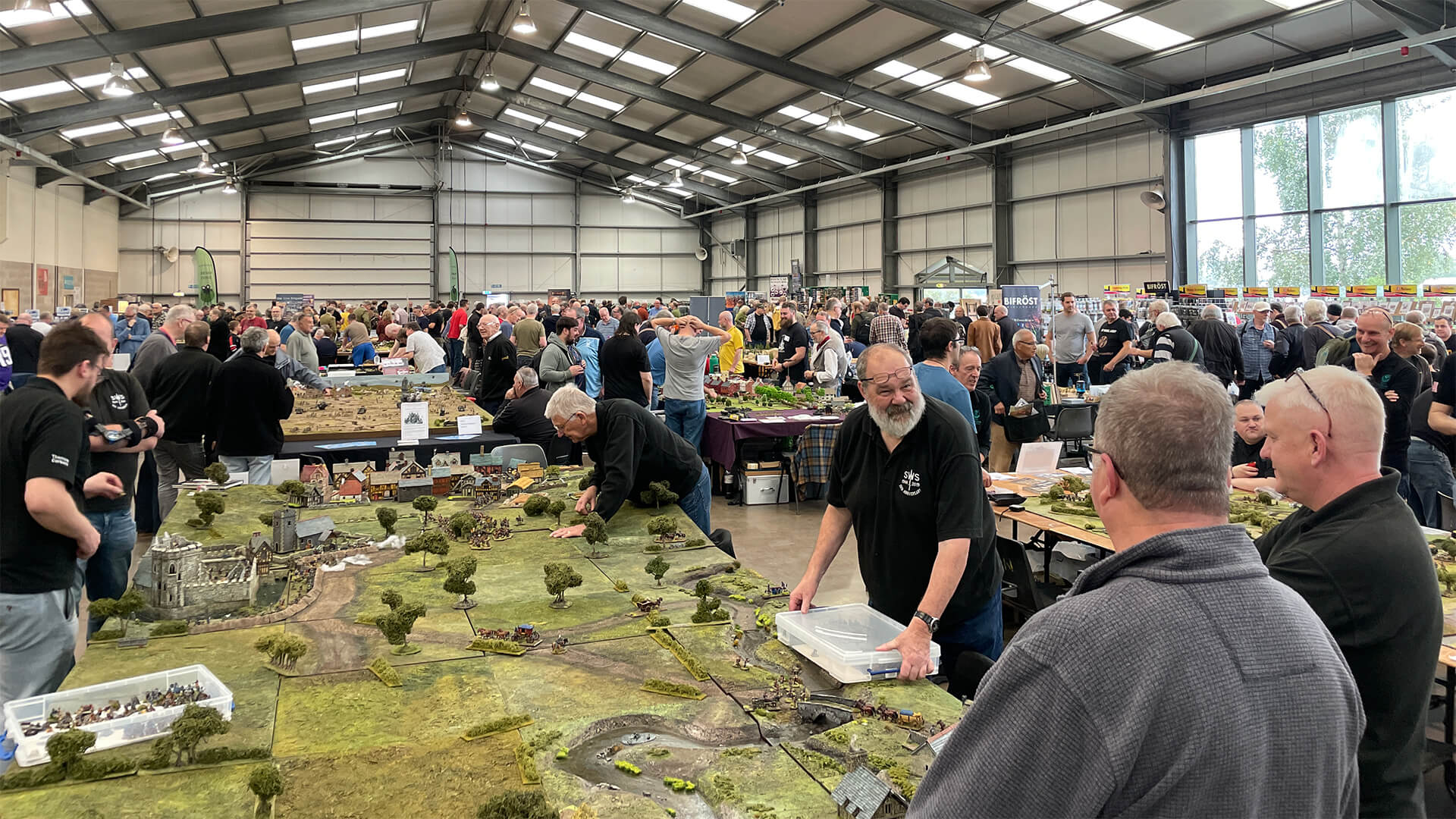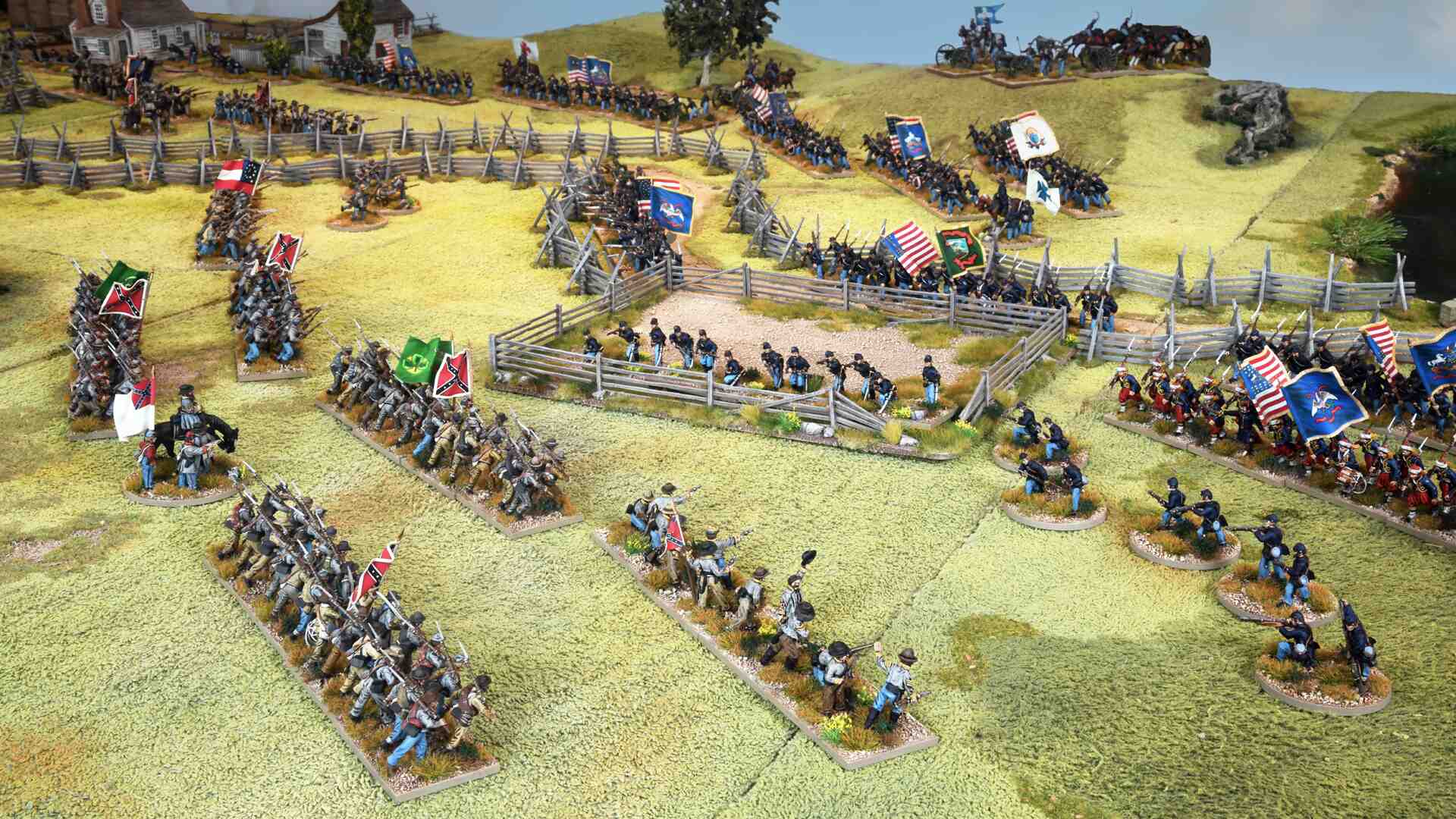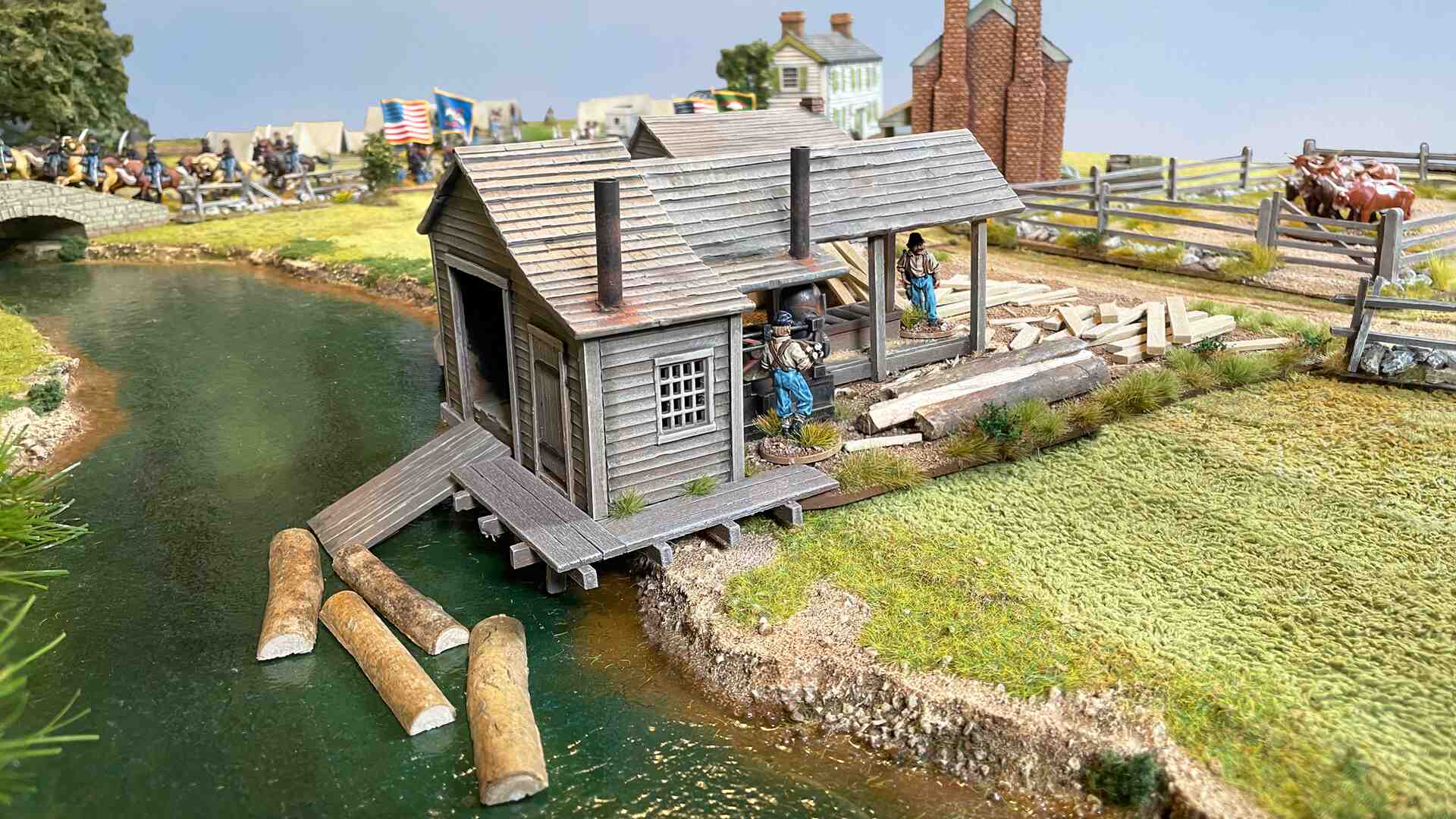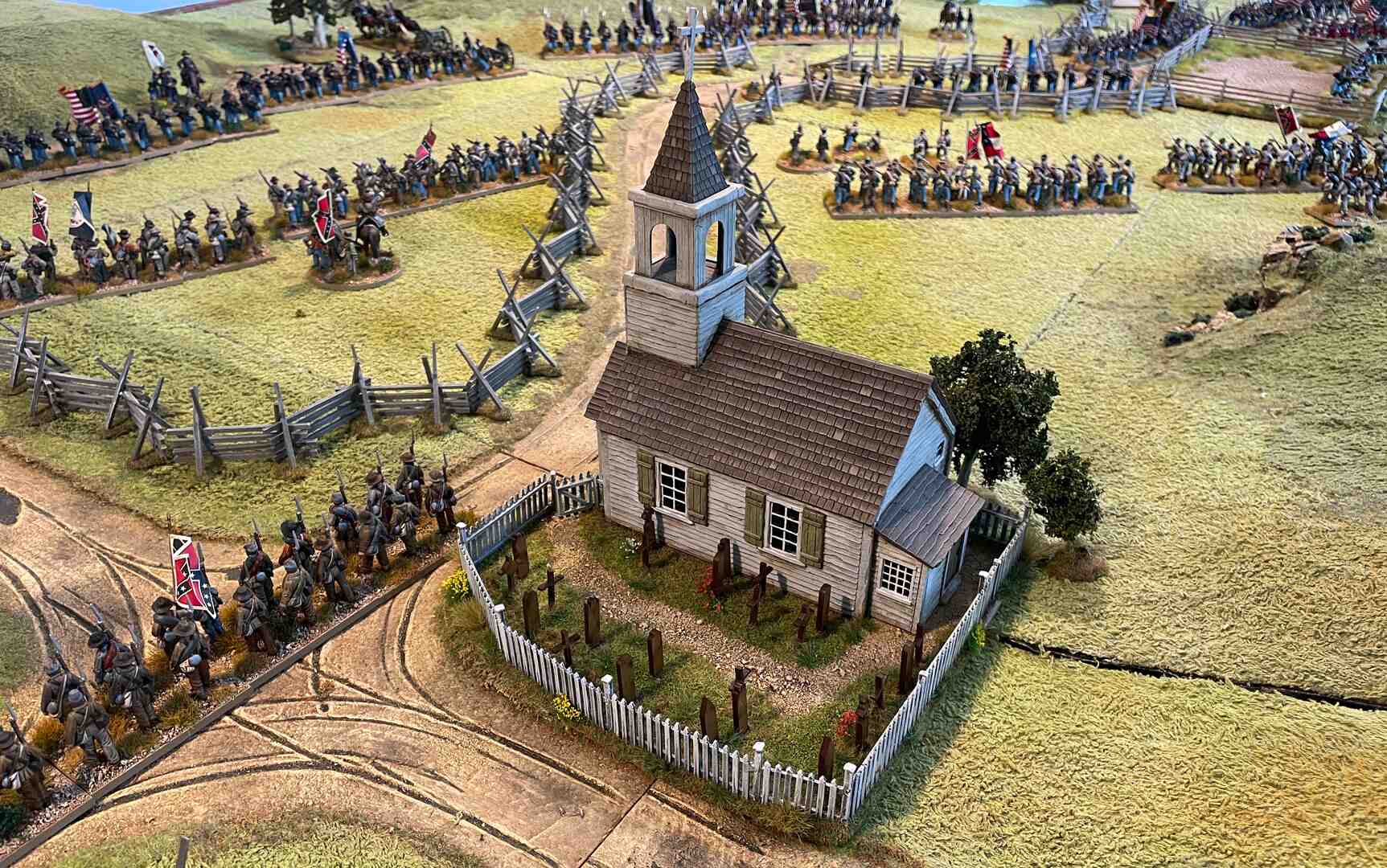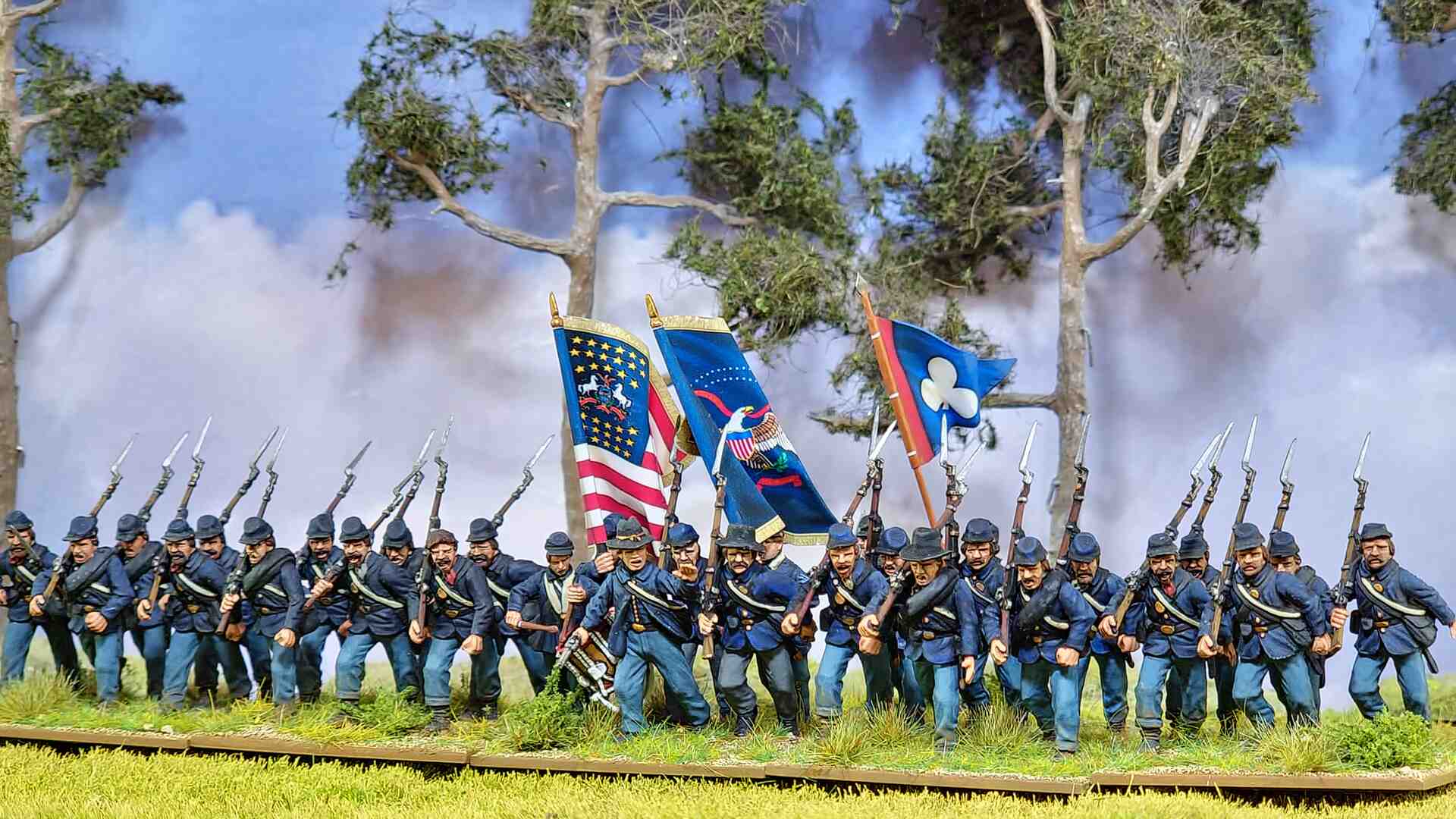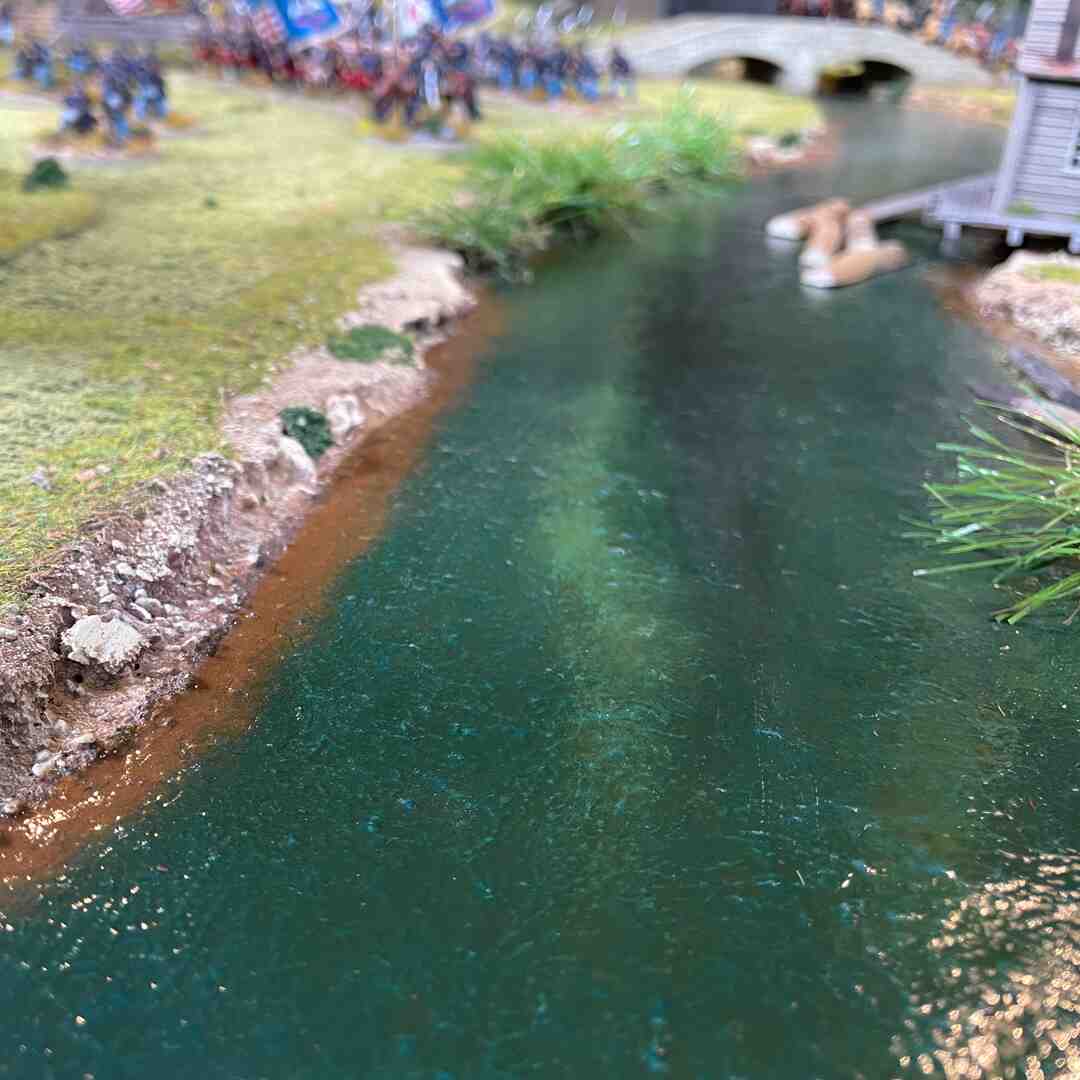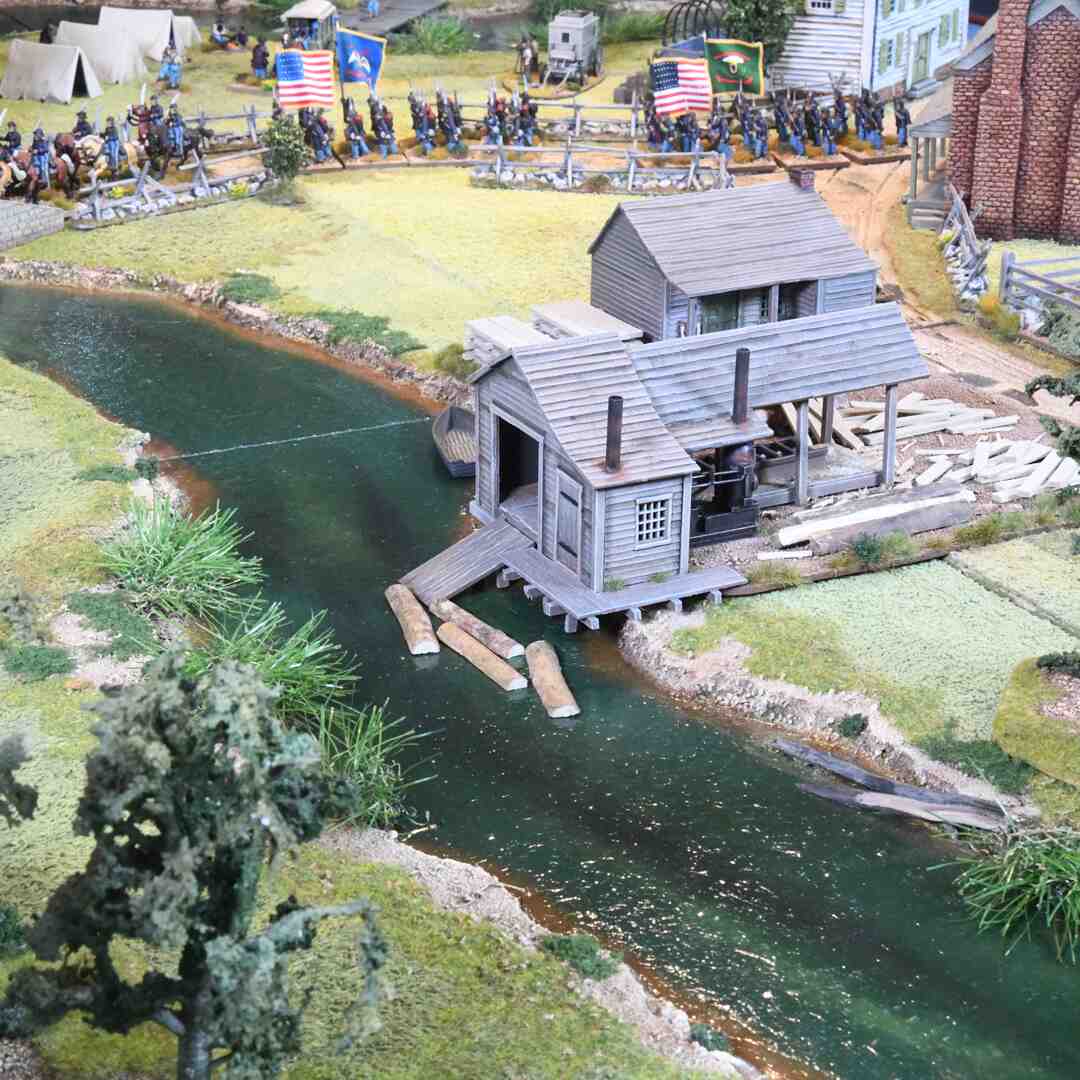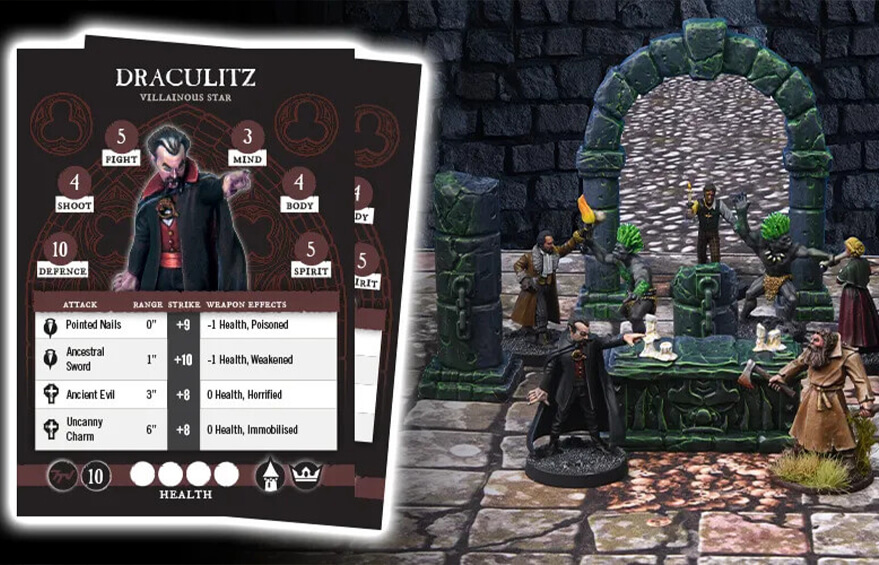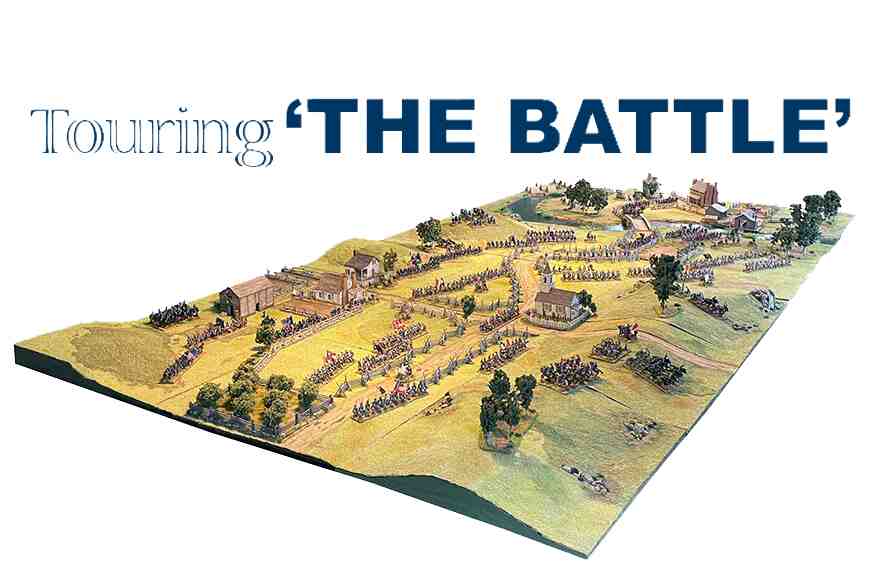The Other Partizan
Valour & Fortitude in the Franco-Prussian War
Partizan was Michael Perry’s first opportunity to show off his Franco-Prussian War range in a big battle. Their chosen ruleset was Valour & Fortitude, which designer Jervis Johnson has recently been modifying to include FPW army sheets.
The armies for this period use rapid fire, massively increasing the amount of damage they can inflict, representing the improved Dreyse and Chassepot rifles. To counter this, infantry can move in a spread formation, with gaps between their bases.
Giant RISK
Nick Hindley brought an attention-grabbing and vastly upscaled version of the much-maligned old classic/old dreadful board game RISK to the show. It served as a hybrid between the original and wargaming standards, with different units acting approximately like they would have historically.
Modifications included powerful artillery, enhanced guard, generals boosting fighting ability, and more. Further nuance was brought by modifiers such as ambulances that allowed casualties to recover, sappers enhancing movement, and alchemists giving players more choice of reinforcement cards.
The Battle of Hargicourt
Celebrating their 50th anniversary, the Grimsby Wargames Society put on a game that showed off the depth of model making and painting talent at the club. They represented a World War One battle involving the 10th battalion of the Royal Lincolnshire Regiment, affectionately known as the Grimsby Chums.
These local boys are about two months into their time on the front here, attacking and capturing the ‘sugar factory’ in the Hargicourt area. While many details are carefully represented on the tabletop the Grimsby Wargames Society couldn’t resist one rather major anachronism – tanks and guns that were not present at the battle have been included for the visual spectacle.
1) British command oversee the battle and send out communications.
2) A sharpshooter searches out his next target.
3) Entrenched German defences prepare to pound the advancing ‘Chums’.
4) A British tank carries an unditching beam on its roof to free itself from muddy trenches and 1 3 2 shell craters.
Operation Resolute
Old Pikeys brought a fictitious ‘Cold War gone hot’ game to the show and presented it in their usual ‘more is more’ style, with a huge board and hundreds of armoured vehicles. In a battle for the West German town of Warendorf the British Army of the Rhine and Soviet forces clashed around multiple objective areas, such as BAOR Rapiers, fuel depots, the Soviet MLTB-U radar, and the Harrier landing site.
The Siege of Hennebont, 1342
What do you get when you combine Dave Andrews, David Imrie, Nick Murray, Andy Milligan, Simon Chick, and Matt Bickley? The short answer is The Bodkins; the longer answer is a crew of hobby legends who ran a breathtakingly vibrant Hundred Years’ War game and were worthy winners of the Editor’s Shield for best in show.
David Imrie talked us through some of their board’s countless details.
David Imrie: Compared to Jeanne d’Arc, Jeanne of Flanders is an unrecognised character. She was famous for dressing in armour and leading 60 knights out of the castle that was under siege. She broke through the French siege lines, got to Auray to get reinforcements, then came back through the siege lines to return to the castle!
Our model of Jeanne of Flanders is a conversion [see below] from a Claymore castings miniature with a fantasy female head added because I wanted her in a pointing pose. There’s a famous picture of her looking out over the battlements, pointing to the English fleet, our model is based on that illustration. Because she was Flemish, I put a Flemish pavise on the stand as a nod to her heritage but there’s also the banner of Brittany and the standard of Brittany. She wanted people to know that she was going to be the claim.
Building the castle
DI: This castle didn’t exist until two weeks ago… until about three weeks ago we were going to put on an American Civil War battle! We were worried it would be too similar to the one we played at May’s Partizan so, as we all had early Hundred Years’ War collections, this seemed like a good choice!
Dave Andrews had this Hudson & Allen kit in his collection for something like 30 years and, with his modelling magic, he’s cut it up, reshaped it, and made it into something that comes to life. He made his own mould for the turrets, and the gatehouse has a scratch-built roof of carefully cut plasticard as well as little shutter details.
DI: Matt Bickley’s knights from our previous Crecy game, Simon Chick’s knights, Dave Andrew’s Hundred Years’ War collection, and my own feature. This is just a fraction of what we have though; if we put it all out it would be too crammed to be playable!
At the beginning of the week we didn’t have a single cog and you can’t have an English landing without them. We all rolled up our sleeves and completed a Zvesda 1:72 Hansa Cog each. Simon had the wading figures from another game and they were ideal to place coming to shore.
Elevated Spectacle
The Boondock Sayntes’ ever-prolific Ian promised us a hill fort when he talked us through his Laswari, 1803 game in Wi427. He didn’t disappoint at the Other Partizan, bringing the elevated defences of a Raj palace to his Plains of Lalsot, 1787 demo game.
A notable double
For the first time in Partizan history, two game awards were presented to the same table; Charles Rowntree’s 6mm Battle of Scarif won the Pete Gill Shield for the best Participation Game and the new Bruce Quarrie Award for the Best Small Game.
Charles, going under the name ‘All Hell Let Loose’ at the show, is no stranger to creating impressive boards and battles at a small scale. Check out articles in Wi416 and 417 where he discusses his previous award-winning game, which showcased the Glosters’ Last Stand during the Korean War.
Siege of Stokesay Castle
The Shrewsbury Wargames Club are no strangers to the Macfarlane Shield, winning it at a second Partizan in a row with their splendid English Civil War demonstration game. The battle grew in scale over the day, starting with only tens of figures on each side but escalating to a far larger clash, allowing club members to chat to viewers and explain all the goings on of the period and rules.
Small but perfectly formed gaming
Mark and Pete run Total Battle Miniatures and, despite being sandwiched between several huge 28mm scale tables, they more than held their own with a grand tactical game that showed just how beautiful small scale can be.
Race to Caen showed off the terrain, buildings, and landing ships they manufacture in 3mm, along with 6mm figures from Baccus, played with Division Commander rules. The Germans were AI controlled while players commanded the British and Canadian forces on Sword, Juno, and Gold beaches. The mission for the Allies was to push to Bayeux, Carpiquet, and Caen, with each area providing different victory points.
The landscape and built-up areas are based on maps and the distances are correct, with three inches representing a mile, and each stand a battalion. Various squares on the board can be switched out, creating a fog of war system, where features are only revealed when they come into line of sight or are hit by artillery.
Race to Caen was cunningly constructed by master maker Pete, built within a custom ‘decorating table’ that could be easily folded up to carry it away with minimal fuss.
The defence of Calais
1st Corps travelled back to May 1940 on their impressive demo game, with the German 1st Panzer division attempting to encircle Calais and move north. The BEF defended, with Queen Victoria’s Rifles and some searchlight detachments acting as infantry.
Historically the Germans cut Calais off, but the British 3rd Royal Tank regiment did make previous contact with them, so 1st Corps’ owners, brothers Michael and Simon, decided to bring in British armour on a skewed timeframe to make the battle more spectacular.
Related Posts
The Cult of Dracula Cards
Enjoy ‘The Cult of Dracula’ article from November’s issue? Download the following cards to print off and play with!
Touring ‘The Battle’
We were so impressed with Messrs Andrews and Imrie’s American Civil War demo table at Partizan 2023, that we insisted they give us an in-depth tour of the board, sharing some details on how they brought it together along the way. Over to Dave Andrews to tell us about the


